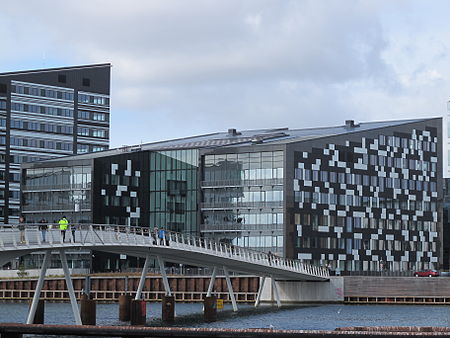Denmark–Norway (Danish and Norwegian: Danmark–Norge) was an early modern multi-national and multi-lingual real union consisting of the Kingdom of Denmark, the Kingdom of Norway (including the then Norwegian overseas possessions: the Faroe Islands, Iceland, Greenland, and other possessions), the Duchy of Schleswig, and the Duchy of Holstein. The state also claimed sovereignty over three historical peoples: Frisians, Gutes and Wends. Denmark–Norway had several colonies, namely the Danish Gold Coast, the Nicobar Islands, Serampore, Tharangambadi, and the Danish West Indies. The union was also known as the Dano-Norwegian Realm (Det dansk-norske rige), Twin Realms (Tvillingerigerne) or the Oldenburg Monarchy (Oldenburg-monarkiet).
The state's inhabitants were mainly Danes, Norwegians and Germans, and also included Faroese, Icelanders and Inuit in the Norwegian overseas possessions, a Sami minority in northern Norway, as well as other indigenous peoples. The main cities of Denmark–Norway were Copenhagen, Christiania (Oslo), Altona, Bergen and Trondheim, and the primary official languages were Danish and German, but Norwegian, Icelandic, Faroese, Sami and Greenlandic were also spoken locally.In 1380, Olaf II of Denmark inherited the Kingdom of Norway, titled as Olaf IV, after the death of his father Haakon VI of Norway, who was married to Olaf's mother Margaret I. Margaret I was ruler of Norway from her son's death in 1387 until her own death in 1412. Denmark, Norway, and Sweden established and formed the Kalmar Union in 1397. Following Sweden's departure in 1523, the union was effectively dissolved. From 1536/1537, Denmark and Norway formed a personal union that would eventually develop into the 1660 integrated state called Denmark–Norway by modern historians, at the time sometimes referred to as the "Twin Kingdoms". Prior to 1660, Denmark–Norway was de jure a constitutional and elective monarchy in which the King's power was somewhat limited; in that year it became one of the most stringent absolute monarchies in Europe.
The Dano-Norwegian union lasted until 1814, when the Treaty of Kiel decreed that Norway (except for the Faroe Islands, Iceland, and Greenland) be ceded to Sweden. The treaty however was not recognised by Norway, which resisted the attempt in the 1814 Swedish–Norwegian War. Norway thereafter entered into a much looser personal union with Sweden until 1905, when that union was dissolved and both kingdoms became independent.










